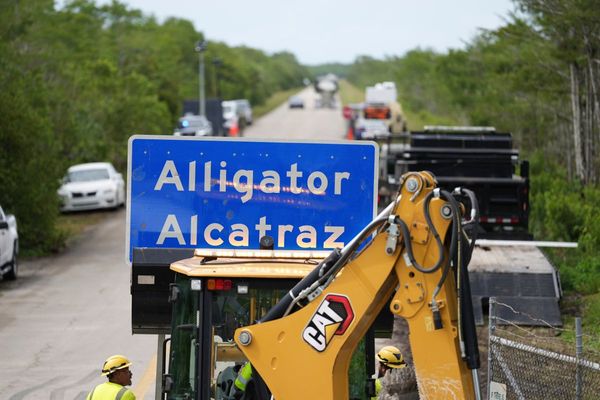
New research shows that increased space travel could undo efforts to repair the hole in the ozone layer. Successful global coordination to ban harmful chlorofluorocarbon (CFC) gasses and restore the ozone was a rare climate triumph – but can it be replicated in the face of a potential new threat?
Researchers in New Zealand have warned that expected increases in space travel are likely to damage the Earth’s ozone layer if coordinated action is not taken.
Although emissions from rocket launches are currently relatively small compared to other human activities, they could grow to rival emissions from the aviation industry in coming decades, researchers from the University of Canterbury wrote in a new article published in the Journal of the Royal Society of New Zealand.
“Many emissions products from rocket launches are ozone-depleting, and the threat to the ozone layer could be significant,” they wrote.
The ozone is a protective layer of the atmosphere that sits 15 to 50km above the Earth’s surface and absorbs almost all of the sun’s UV light, which can be harmful to humans and wildlife.
CFCs and other harmful chemicals have depleted the ozone layer, notably over both the Arctic and Antarctic. But the degradation is most pronounced in the southern hemisphere, where a significant hole in the ozone layer has formed every spring since 1979.
A billion-dollar industry
Rocket launches pose a danger to the Earth’s protective layer as they emit damaging gasses and particles “directly into the middle and upper atmosphere, where the protective ozone layer resides”, the researchers wrote.
In addition to harmful substances released by burning rocket fuel, space debris from parts that burn up upon their return to Earth also disperses damaging particles into the atmosphere.
Without developments in rocket and fuel technologies, these emissions are set to increase as the space sector grows rapidly in every region of the world.
Around 70 nations now have space agencies and private space companies are also becoming more common. The “billionaire space race” – led by Richard Branson’s Virgin Galactic, Jeff Bezos’ Blue Origin and Elon Musk’s SpaceX – is pushing satellite and space tourism initiatives that “suggest an upwards trend in global launch totals”, the researchers wrote.
“We've seen rocket launches almost doubling in three years and there are missions aiming towards launching up to as many as three rockets a day, which is just unprecedented,” said Dr. Eloise Marais, associate professor in physical geography at University College London.
“With the potential for growth in the space sector, there is reason to be concerned; the pollution coming from rocket launchers and disposal of space junk isn't regulated under any framework.”
Globally, smaller companies are also proliferating. India alone had a total of total of 368 space tech businesses as of May 2021, due to heavy investment in its own commercial space industry.
The global space launch market was valued at almost $14.5 billion in 2022 and is expected to almost triple, to close to $43 billion, by 2030.
An environmental success story
There is strong precedent for introducing regulatory framework to protect the atmosphere.
In 1987, the international Montreal Protocol aimed to reduce damage to the ozone layer by phasing out harmful CFCs, which were widely used for refrigeration, solvents, in aerosols and for industrial activities.
“It's been quoted as the most successful global environmental treaty there's ever been,” says Martyn Chipperfield, professor at the University of Leeds and senior researcher at the UK’s National Centre for Earth Observation. Adoption of the treaty has avoided “catastrophic ozone depletion”, he said.
A UN report in January confirmed the global phase-out of nearly 99 percent of banned ozone-depleting substances. As a result, the hole in the ozone is shrinking and is on track to recover within four decades.
Without the protocol it is estimated that two-thirds of the ozone layer would have been destroyed by 2065, and the amount of damaging solar radiation reaching the Earth would have more than doubled.
This rare success story has been touted as an example for other environmental progress. “Ozone action sets a precedent for climate action,” said the World Meteorological Organization’s secretary-general, Petteri Taalas. “Our success in phasing out ozone-eating chemicals shows us what can and must be done – as a matter of urgency – to transition away from fossil fuels, reduce greenhouse gases and so limit temperature increase.”
Goodwill and action?
However, the circumstances of the Montreal treaty made it uniquely poised for widespread adoption and success. “Industry was on board with the controls, because they could see there was a move to control CFCs and they had alternatives, and there was a multilateral fund which enabled non-developed countries to transition to other alternatives without financial penalties,” Chipperfield said.
“And the initial protocol was very modest in its aims; it said, as the science becomes clearer, we can have amendments to make it stronger. And in due course, there were these amendments.”
By contrast, there is no obvious clean replacement for rocket fuels currently in use and little impetus to regulate a small – but rapidly expanding – sector, even though there are pressing environmental concerns to consider.
One of these is the black carbon that is released into the atmosphere in the form of soot particles as a result of each rocket launch. These particles can linger in the higher levels of the atmosphere, where there is no rain to wash them out, for two and a half years before they settle back to earth.
“They are very, very efficient at absorbing the sun's rays, so they warm up the local atmosphere and they offset the energy balance of the earth and impact climate,” said Marais.
As the space industry grows, researchers in New Zealand are calling for coordinated global action to measure emissions from launch vehicles and share data to build a picture of the environmental risk rocket launches may pose.
They also suggest that effects on ozone should be incorporated into industry best-practices for rocket design and development.
“Ozone recovery has been a global success story. We want to ensure that future rocket launches continue that sustainable recovery,” said a co-author of the research, Dr. Laura Revell, an associate professor in environmental physics.
There is hope among experts that more steps can be taken. “People do care about the ozone layer,” said Chipperfield. “You’d hope there would be some goodwill and action taken like there was last time it was threatened.”







